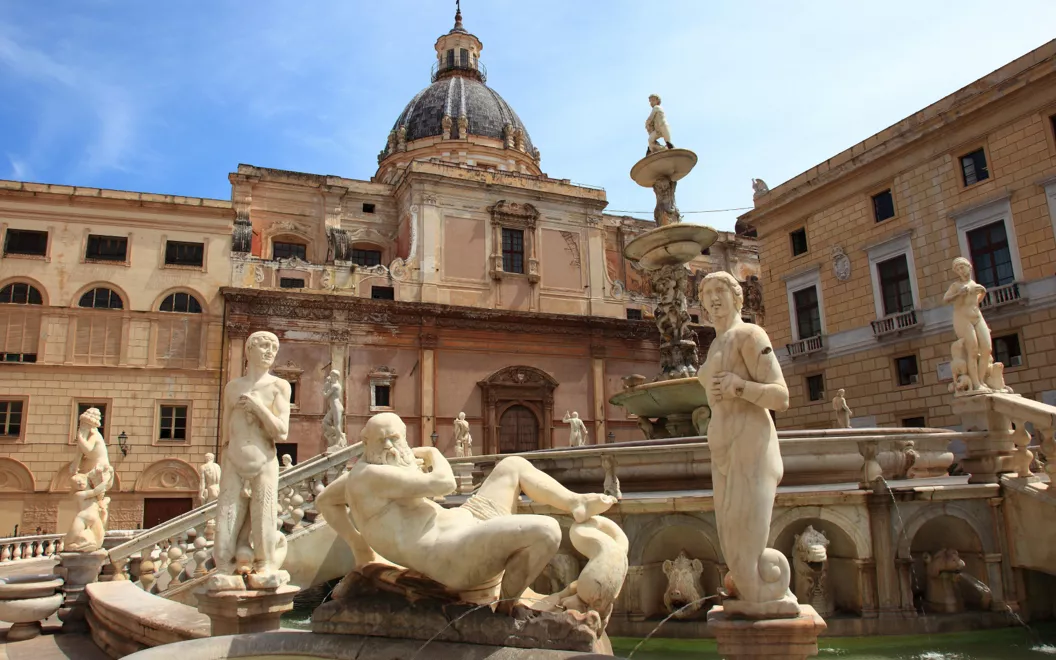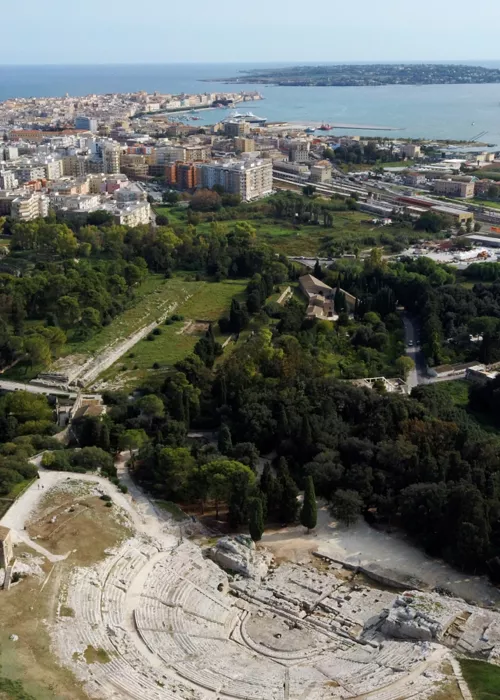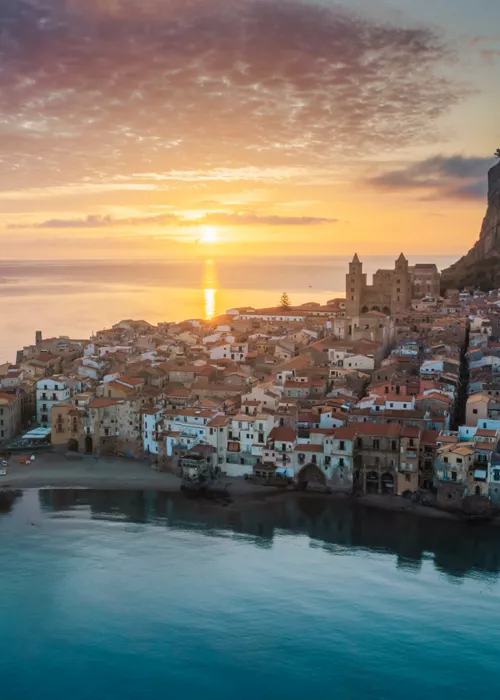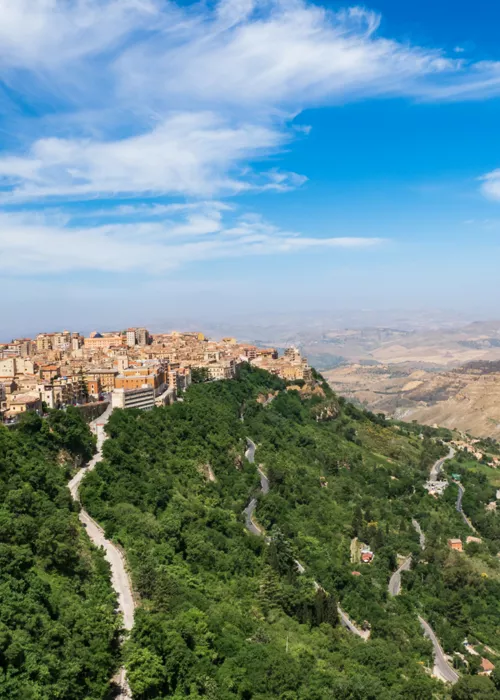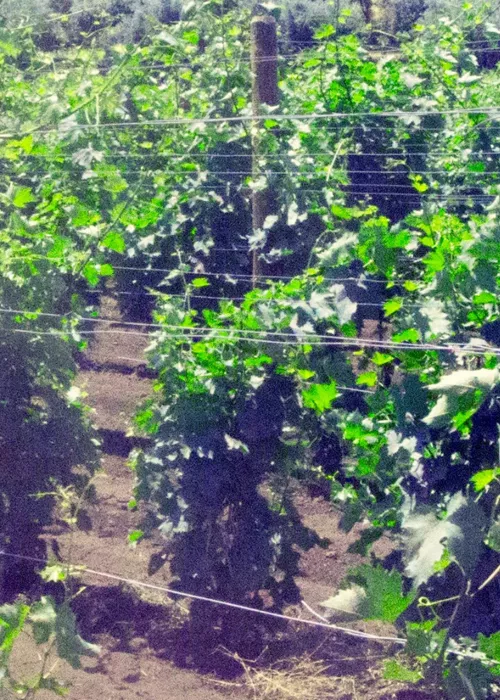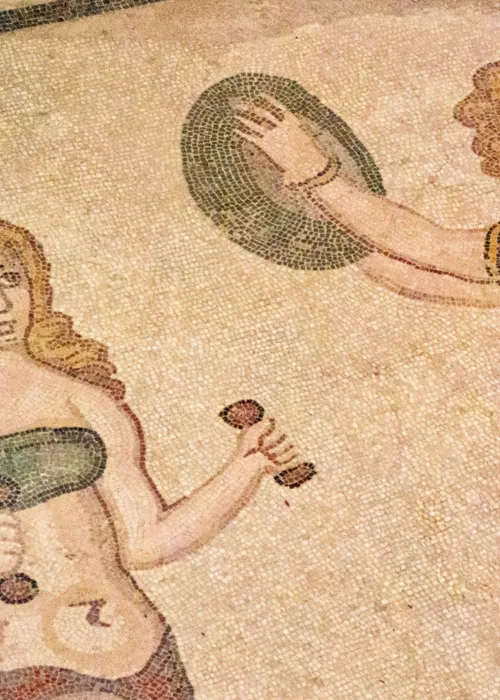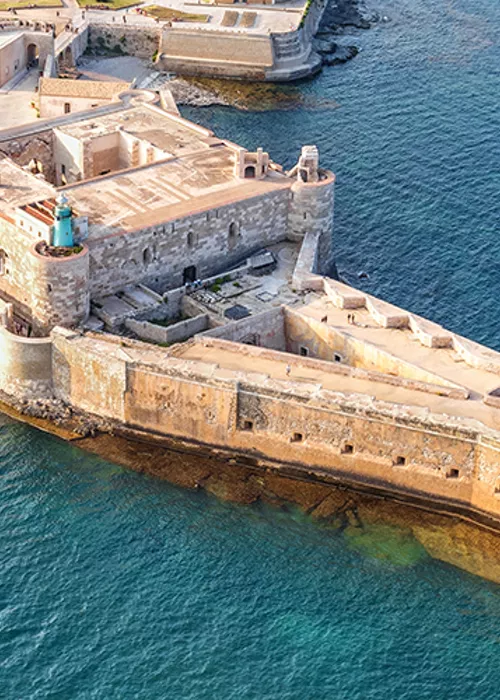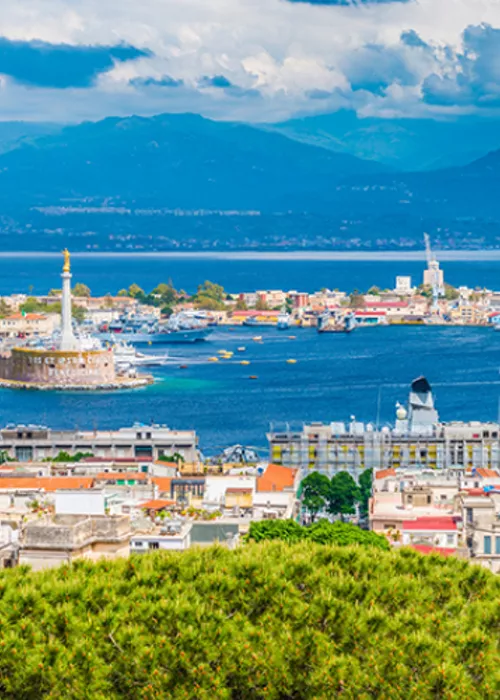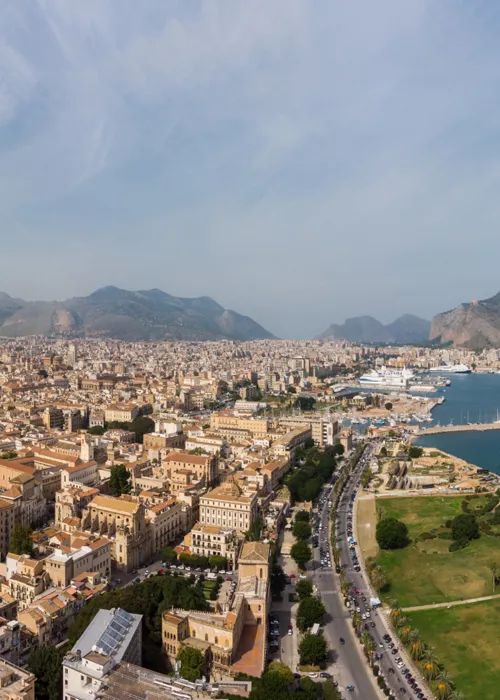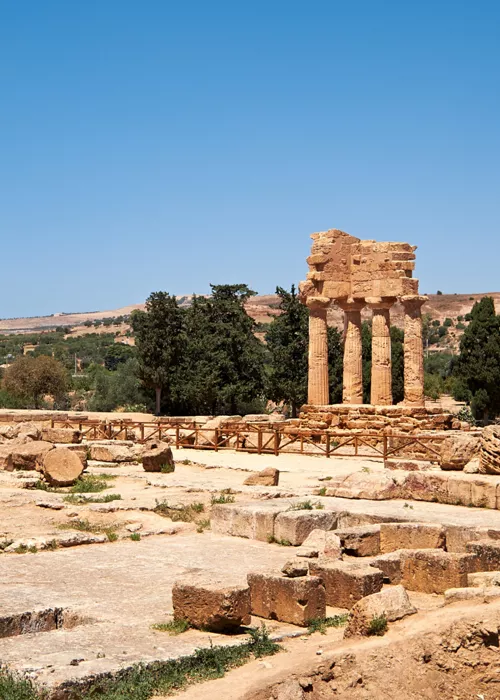Palazzo dei Normanni

The itinerary begins in beauty, from Palazzo dei Normanni, also known as the Royal Palace, an authentic jewel of Byzantine and Arab-Norman art and a UNESCO heritage site. Built around the tenth century by the Norman kings, the Palace is the oldest royal residence in Europe, has hosted the rulers of the Kingdom of Sicily and was the imperial seat. Inside you will find yourself in front of the Palatine Chapel, with its Byzantine mosaics, inlays and porphyry flooring in Arabic style, topped by the grandiose mosaic of Christ Pantocrator. Get ready: it's a show that takes your breath away.
Palermo Cathedral

Continuing through the park of Villa Bonanno, in 5 minutes you will arrive at the Cathedral. With its domes, towers and battlements, it is an exquisite synthesis of styles: from Greek and Roman art to Catalan and Gothic, passing through Arab and Norman influences. Inside, the church houses, in a "treasure room", jewels of inestimable value such as the golden tiara belonging to Empress Constance of Sicily and other royal ornaments.
Piazza Villena

If you take Corso Vittorio Emanuele from here, you will find yourself in Piazza Villena, which the people of Palermo call the Quattro Canti: with an octagonal plan, the square widens at the intersection between the two main streets of Palermo, Via Maqueda and Via Vittorio Emanuele. The four cantons of the name testify to the history of Palermo: at the foot of the four facades, equal and symmetrical, there are as many fountains that represent the watercourses of the city (Papireto, Pannaria, Kemonia, Oreto). Lifting your gaze you will cross the allegories of the seasons, then the statues of four Spanish kings and finally, to garrison the blue of the sky, the patron saint of the city: Agata, Ninfa, Oliva and Cristina.
Ballarò

Continuing along Via Maqueda, in just over five minutes you reach Ballarò, the oldest market in the city, the direct heir of the souq that animated those alleys during the Arab domination: let yourself be guided by the banquets, the sung calls of the street vendors, and the aromas of local street food, the truest legacy of the dominations that have followed each other in the capital.
Bread and panelle is the most popular snack, a sandwich stuffed with a fritter of flour and chickpeas. Equally well known is arancina - here it goes feminine! - a rice meatball stuffed with ragout, breaded and fried. Those who do not have calorie problems can be seduced by bread with the spleen. Dulcis in fundo, the irresistible temptation of Sicilian sweets: cannolo, with sheep ricotta, or cassata, always based on ricotta, sponge cake, candied and almond paste.
Teatro Massimo

Leaving the historic and folkloric market of Ballarò behind, walk now for 15 minutes along Via Maqueda in the opposite direction. Places and monuments recall the strong theatrical vocation of the city, on the one hand rooms and workshops linked to the Opera dei Pupi, the traditional puppets whose repertoire combines the Carolingian cycle with stories of saints and robbers; on the other, the historic Teatro Massimo, which stands at the end of the street, in the form of a temple: inaugurated at the end of the nineteenth century, it is the largest opera house in Italy and the third in Europe.
Teatro Politeama Garibaldi

The tour through the beauties of Palermo continues. After admiring the majestic Teatro Massimo, walk for 600 meters via Ruggiero Settimo until you reach, at number 2 in via Filippo Turati, the Teatro Politeama Garibaldi.
Built at the same time as the Teatro Massimo, the Politeama Garibaldi is an important example of neoclassical architecture. Today it is the prestigious headquarters of the Sicilian Symphony Orchestra Foundation.
Lungomare di Palermo

At the end of this pleasant urban trekking reconciled by the mild climate of Palermo, it will be more or less the setting of the sun. Go down to the seafront, where you can say goodbye to the city in front of an aperitif at sunset or a seafood dinner in one of the restaurants, from Mondello to Molo di Sant'Erasmo.
Villa Sperlinga

If instead you prefer to taste typical Sicilian products in the natural setting of the hinterland, the farmhouses of the Campagna Amica Foundation are the ideal place to end the tour with a bucolic evening.
Do you feel that you cannot leave without bringing with you the aromas and flavors of this city?
Spend an hour shopping at km0, at the farmers' market of Campagna Amica, which is held every Saturday morning in Villa Sperlinga, the city's historic garden, where you can find the so-called Seals, excellences of local biodiversity: the late mandarin of Ciaculli and other products made from local ancient grains, such as Perciasacchi wheat or Nero delle Madonie.

